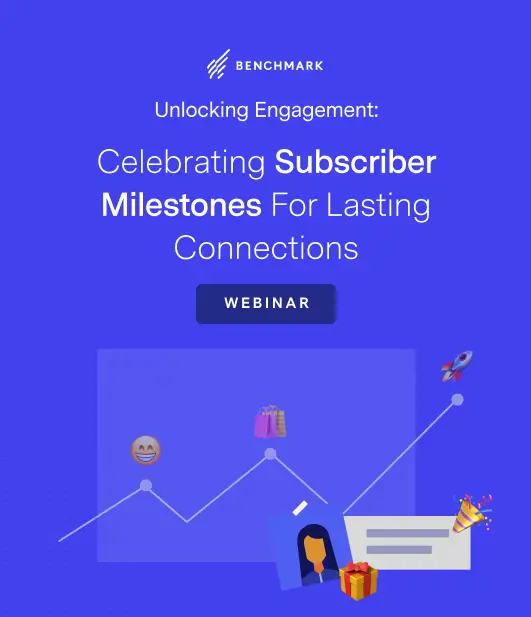How Nostalgia Marketing is Driving Modern Campaigns (and Why It Works)
November 14, 2024 5 min read

Nostalgia marketing has become an increasingly popular strategy for brands to connect emotionally with consumers. By evoking past memories—through familiar imagery, sounds, or cultural references—nostalgia marketing taps into feelings of comfort, belonging, and joy. These emotions resonate with audiences personally, making them more receptive to marketing messages.
This article will explore nostalgia marketing, why it works so effectively, and how brands use it to build deeper connections with consumers.
What is Nostalgia Marketing?
Nostalgia marketing involves using themes, references, and symbols from the past to evoke warm, positive memories in the minds of consumers. The goal is to create an emotional bond by reminding people of experiences, products, or eras they fondly remember. These campaigns often reference pop culture from the 80s, 90s, or early 2000s—such as music, TV shows, retro fashion, or discontinued products—and reintroduce these elements with a modern twist.
These marketing strategies work across industries, from fashion and entertainment to technology and food, as brands aim to appeal to both younger audiences discovering these cultural artifacts for the first time and older consumers who lived through them.
Why Nostalgia Marketing Works
Nostalgia marketing is more than just a gimmick—it is rooted in psychological principles that make people more likely to connect with, trust, and respond to nostalgic content. Here are the key reasons why it works:
1. Nostalgia Triggers Positive Emotions
Research shows that recalling positive memories activates dopamine production in the brain, triggering feelings of happiness and satisfaction. Brands that successfully evoke nostalgia tap into these emotions, fostering goodwill toward their products or services. Consumers are more likely to associate these feelings with the brand, increasing the likelihood of a purchase.
2. Creates a Sense of Comfort in Uncertain Times
Nostalgia marketing tends to perform especially well during periods of social, political, or economic uncertainty. In difficult times, people gravitate toward familiar and comforting memories that provide a sense of stability.
A prime example of this phenomenon was during the COVID-19 pandemic. As people adjusted to isolation and uncertainty, many brands launched nostalgic campaigns. Streaming services like Netflix released old shows, while gaming companies revived classic titles, capitalizing on consumers’ desire for familiarity and comfort.
3. Fosters Connection Across Generations
Nostalgia marketing appeals to the generation that initially experienced a particular cultural moment and to younger audiences who enjoy retro aesthetics or trends. For instance, Gen Z consumers—though they didn’t grow up in the 80s—embrace vintage fashion and aesthetics popularized by older generations. Brands referencing these eras can simultaneously bridge the generational gap, appealing to multiple demographics.
This dual appeal makes nostalgia marketing a powerful tool for brands that want to broaden their reach. A perfect example is the resurgence of Polaroid cameras. While older generations may associate them with childhood memories, younger consumers view them as trendy, retro accessories.
4. Encourages Social Sharing and Virality
Nostalgic content often resonates so deeply with consumers that they feel compelled to share it with their social networks. People love to reminisce and discuss shared experiences. A well-executed nostalgia campaign can spark conversations, inspire user-generated content, and spread organically across social media platforms.
For instance, when Spotify launched its “2019 Wrapped” campaign, which showed users their top songs and playlists of the decade, it encouraged them to share their listening history on social media. This trip down memory lane became viral, with millions of users sharing their personalized results.
5. Builds Brand Loyalty and Trust
Nostalgia marketing can help brands strengthen customer loyalty by associating themselves with meaningful moments from consumers’ pasts. If a product or campaign evokes a fond memory, consumers are likelier to develop a sense of trust and emotional attachment to the brand.
This is why brands like Disney continue to remake their classic movies and release merchandise tied to beloved franchises. For many people, these movies are tied to special childhood memories, and purchasing a new product associated with them reinforces that emotional connection.

Unlocking Engagement: Celebrating Subscriber Milestones for Lasting Connections
DOWNLOAD NOWExamples of Successful Nostalgia Marketing Campaigns
Several well-known brands have successfully leveraged nostalgia marketing to connect with their audience and boost engagement:
1. Nintendo’s NES Classic Edition

In 2016, Nintendo capitalized on nostalgia by re-releasing its iconic NES gaming console with pre-loaded classic games like Super Mario Bros. and The Legend of Zelda. The limited-edition product was a massive success, appealing to long-time Nintendo fans and younger audiences curious about retro gaming.
2. Stranger Things and 80s Pop Culture
Netflix’s Stranger Things draws heavily on 80s pop culture references, from fashion to music to storytelling tropes. This nostalgic appeal has made the show a hit with viewers of all ages, sparking renewed interest in 80s music, toys, and trends. Brands like Coca-Cola even released limited-edition products featured in the show to enhance the nostalgic experience.
3. McDonald’s Happy Meal for Adults
In 2022, McDonald’s launched a limited-time Happy Meal for adults, complete with toys inspired by characters from its 90s campaigns. The nostalgic promotion generated significant buzz, appealing to millennials who grew up with Happy Meals and creating excitement among younger customers.
How to Implement Nostalgia Marketing in Your Campaigns
If you’re looking to incorporate nostalgia marketing into your strategy, here are some tips to keep in mind:
1. Know Your Audience’s Nostalgia Triggers
Understand the cultural moments, products, or trends that resonate with your target audience. Research generational preferences and identify nostalgic elements that align with your brand’s identity.
2. Blend the Past with the Present
For nostalgia marketing to succeed, it’s essential to balance past and present. Incorporate nostalgic elements but give them a modern twist to make them relevant to today’s audience.
3. Use Social Media to Amplify Campaigns
Social media platforms are ideal for nostalgia-driven campaigns. Encourage your audience to share their memories and experiences, and consider using hashtags to create a sense of community around your campaign.
4. Create Limited-Time Offers
Limited-edition products or campaigns add a sense of urgency and exclusivity. Consumers are more likely to engage with nostalgic campaigns if they feel part of a special moment that won’t last forever.
Nostalgia marketing is a powerful strategy that taps into consumers’ emotions, helping brands foster trust, connection, and loyalty. In a world filled with distractions and rapid change, nostalgia offers comfort and familiarity that resonates deeply with audiences.
Whether through product re-releases, retro-themed campaigns, or throwback social media posts, brands that harness the power of nostalgia can build stronger relationships and drive engagement across generations. As consumer preferences evolve, nostalgia marketing will remain valuable for brands seeking to create meaningful connections in a crowded marketplace.
Benchmark Recommends
See all articles
Everything You Can Do With Benchmark Email’s Free Plan (Spoiler: It’s a Lot)
The Transparent Email Software Pricing Checklist: How to Spot Hidden Fees
A powerfully simple email marketing platform
Sign up for free to see how effortless email marketing can be.
Our Company
Compare
Solutions
Compare
Account
© Polaris Software, LLC 粤ICP备14001834号 Benchmark Email® is a registered trademark of Polaris Software, LLC
© Polaris Software, LLC 粤ICP备14001834号
Benchmark Email® is a registered trademark of Polaris Software, LLC



